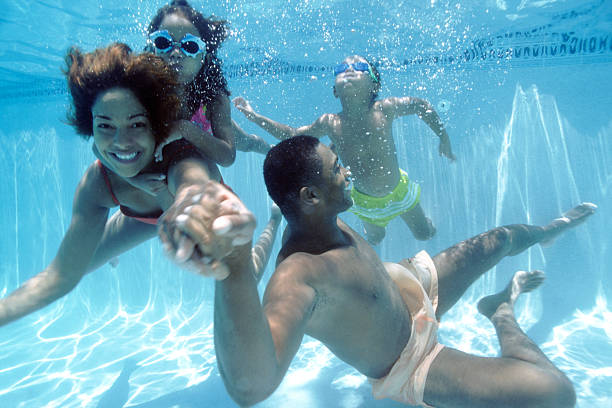About 70 percent of Black people don't know how to swim, and according to the Centers for Disease Control and Prevention (CDC), the number one cause of death in American children between the ages of 1-4, is drowning.
How can we keep ourselves and our children stay safe this year in the community pools, beaches, and lakes? Here are some pretty important safety tips to always keep in mind for non-swimmers who still want to make a splash:
Lifeguards Are Your Bestfriends
When swimming at the public pool or beach, swim in designated areas supervised by lifeguards. If they’re there, they keep a close eye on everyone in their sight. Be near them if possible.
Always Stay With The Group
Make sure to swim with a buddy and do not swim alone. The bigger the group, the more likely someone is around to help you if something happens.
Tie Up Long Hair
One of the greatest dangers in any pool is entrapment. Faulty drains can and will cause harm to anyone who gets too close to them. The most common drowning through entrapment occurs when long, untied hair gets snagged in a drain.
RELATED: Think You Have Every Swimming Risk Covered? You Might Be Wrong
Have Life Vests For Everyone In The Family
One of the simplest ways to encourage pool safety is to purchase a life vest for everyone in the family. Life vests aren’t expensive, and their ability to save lives is priceless.
Avoid Deep Areas
It’s okay to stay in the shallow area. It was made for non-swimmers, so embrace it. Just remember the deeper you go, the closer up the water is to your face and you don’t want to mistakenly go under.
Say No To Waves & Wave Pools
Yes, wave pools are fun, but they are most definitely dangerous. Even if you have on a vest or a floaty, waves can come as high as your head with pressure so mighty it will knock your entire body down. Just say no.
Keep A Phone Nearby
In the case of an emergency, you want to be able to call 9-1-1 as soon as possible. The operator will more than likely walk you through how to give CPR to the victim while help is on the way.
Last, but certainly not least. Follow the classic "NO" signage, even in the comfort of your home pool too:
- No running in the pool area
- No diving (in shallow areas, or in any part of the pool if it does not include a diving board)
- No wrestling or rough play
- No dunking
- No pushing into the pool
- No prolonged underwater swimming or breath-holding games
- No glass bottles
- Non-swimmers must be accompanied by a parent/guardian at all times
Happy swimming!

Tia Muhammad, BS, is an award-winning freelance content & media creative, copywriter, blogger, digital designer, and marketing consultant. She owns the boutique content and digital media company, jackieGLDN|studio.









